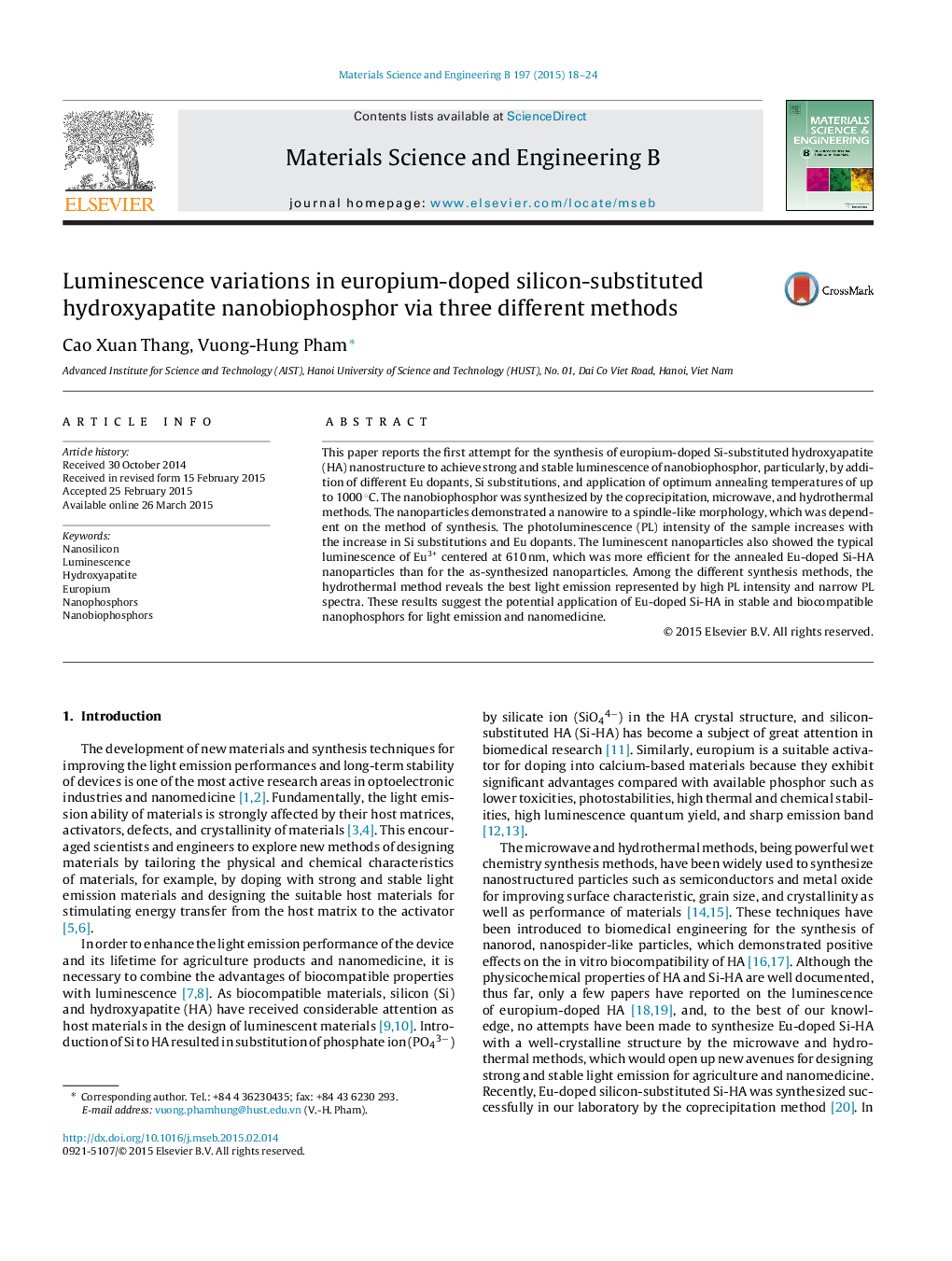| Article ID | Journal | Published Year | Pages | File Type |
|---|---|---|---|---|
| 1528559 | Materials Science and Engineering: B | 2015 | 7 Pages |
Abstract
This paper reports the first attempt for the synthesis of europium-doped Si-substituted hydroxyapatite (HA) nanostructure to achieve strong and stable luminescence of nanobiophosphor, particularly, by addition of different Eu dopants, Si substitutions, and application of optimum annealing temperatures of up to 1000 °C. The nanobiophosphor was synthesized by the coprecipitation, microwave, and hydrothermal methods. The nanoparticles demonstrated a nanowire to a spindle-like morphology, which was dependent on the method of synthesis. The photoluminescence (PL) intensity of the sample increases with the increase in Si substitutions and Eu dopants. The luminescent nanoparticles also showed the typical luminescence of Eu3+ centered at 610 nm, which was more efficient for the annealed Eu-doped Si-HA nanoparticles than for the as-synthesized nanoparticles. Among the different synthesis methods, the hydrothermal method reveals the best light emission represented by high PL intensity and narrow PL spectra. These results suggest the potential application of Eu-doped Si-HA in stable and biocompatible nanophosphors for light emission and nanomedicine.
Related Topics
Physical Sciences and Engineering
Materials Science
Electronic, Optical and Magnetic Materials
Authors
Cao Xuan Thang, Vuong-Hung Pham,
